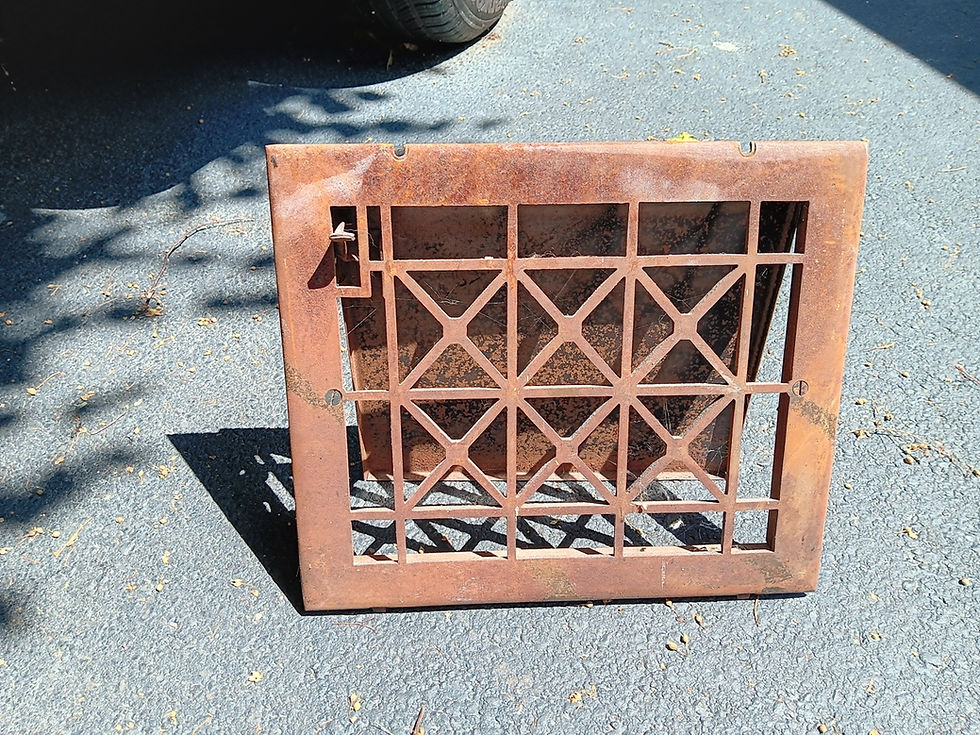Ideas from Ed: Baseboard blitz (Volume 4, Issue 6)
- edwardpetrus

- Jun 1, 2021
- 3 min read
Updated: Jan 13, 2023
This month’s column features an advanced table saw technique, so by all means, if you are not comfortable and experienced and own a good saw, don’t try this. Above all else, safety is the priority! Wear eye protection! You will also likely need to remove any riving knife or other above-table attachment that might be in the way.
I’m working at an old house where someone installed a door where there was a window, and a later owner apparently re-installed a window. Wall damage was covered over with a T-111 type siding, which I removed and patched using a piece of drywall. I installed a length of oak trim under the window where one was missing, to match the other room windows. Left to make was a replacement baseboard to also match the rest of the room.



Many historic baseboards were not a single piece of wood, but built up of a main board topped with a shaped trim piece to give the baseboard its character. That’s how this one was. Here’s a picture of a section of the main piece, both in front view and in profile:


If you have a router or shaper with a huge set of bits that approximate the needed shape, you’re set. The table saw method demonstrated herein lets the curvature of the blade make the cove. To do so, you need to cut ACROSS the blade, not along with it. Notice how the saw is just about matching the piece of baseboard cove when it’s placed somewhat diagonally across the blade:

Cutting in that direction is more like scraping, so you need to go very slowly and take multiple shallow passes. You do NOT want to stress the saw and blade more than you have to – they were not meant to be normally used this way!
There’s no trick to figuring out exactly where to place a guide strip to get the shape you need, so there’s some guesswork and trial and error needed. I used a piece of 1 x 8 pine for the practice baseboard and began by tracing the shape of the real baseboard on the end. You can also see my 1 x 3 guide strip where I first placed it and clamped it in place:


Here’s a picture of where I settled for the final guide strip location and saw depth of cut to come closest to the cove shape I wanted. Notice that I flipped the board over for this pass, as you can see 2 of my other attempts on the opposite edge of the board.(I’m also just holding the board in position for this photo. My position while cutting was on the opposite side of the saw.)


Once I was satisfied with things, I swapped in the board I wanted to use for the real baseboard. It needed to be quarter-sawn oak to match the rest of the room, so I actually used a piece of scrap historic baseboard with a different profile. That would match a lot better than using a fresh piece, and some old imperfections give character. (Tip: You might be able to find a piece of old lumber like this at salvage shops, but be sure there are no nails in it before doing any cutting or shaping!) You can see that the material I used was wide enough to have enough “meat” that my new profile would override the old one:

I used a total of 4 passes over the saw blade, going SLOWLY and only raising the blade a smidge between passes. Here are the results after the 2nd and 3rd passes, essentially scraping away the old profile and getting closer and closer to the desired cove shape:


The 4th pass gave me the shape I wanted, so I trimmed the whole thing top and bottom to match the dimensions of the original template piece:

Here’s the final product as compared to the original. Not 100% but certainly close enough to be unnoticeable when installed:


With a secondary piece attached on top, matching shoe molding at the base, and comparable stain, this section of baseboard will be nearly indistinguishable from that in the rest of the room! Here it is in place prior to putting on the other pieces, which I’ve yet to make:

I hope all your projects go well. Thanks for reading, and happy restoring!
Ed
If you’d like to download a PDF of this “Ideas” column, click here:




Comments